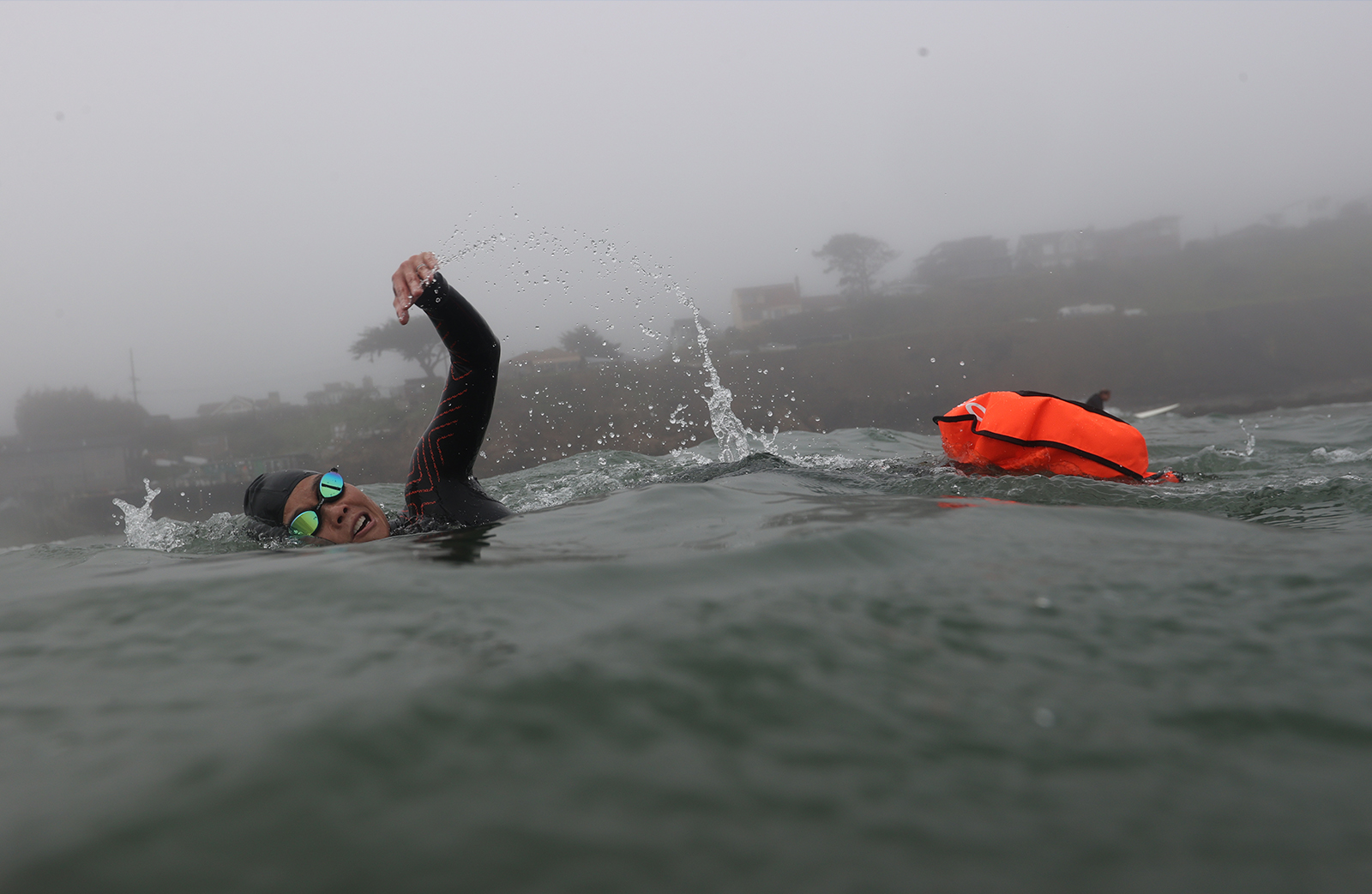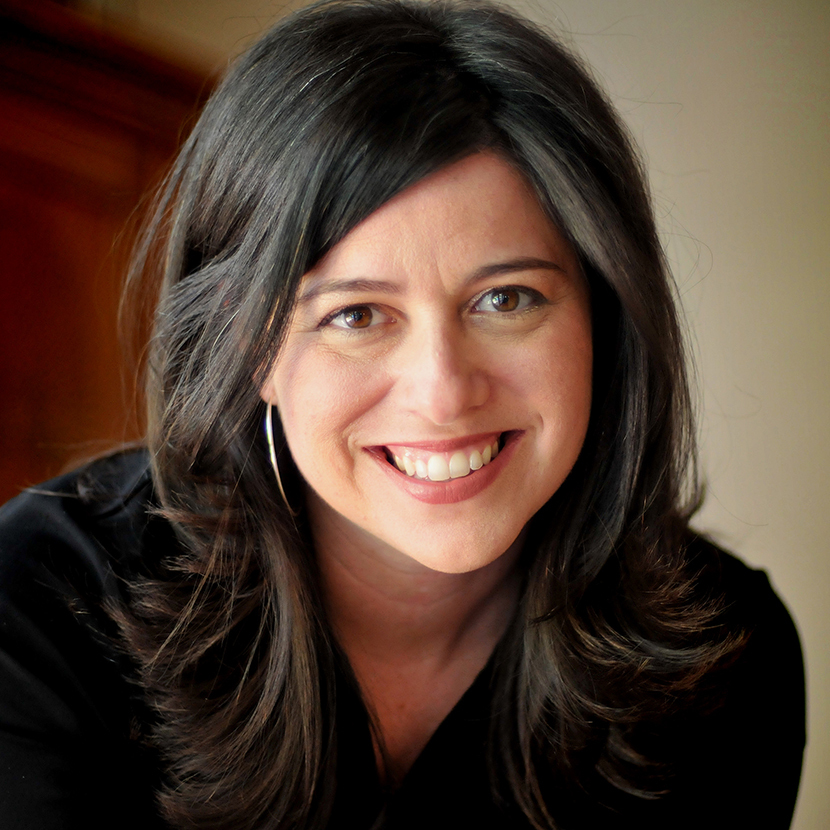Swimming. It’s one of those happy nouns that can spark a flood of sensory memories — of warm afternoons, of the smell of coconut sunscreen and watermelon bubblegum and chlorinated pools and salty oceans. A lifeguard’s whistle. The song of the summer blaring from a boom box. That feeling at the end of the day of being pleasantly exhausted, your skin still a little cool from the water, winding down to sleep well. But is swimming just a luxury of childhood, past lives, and rare vacations — a pastime that exists only in our memories?
Bonnie Tsui, a writer and avid swimmer, doesn’t think so. For her, swimming is like breathing, like life. A meditation, an adventure, an expansion. And she makes a really good case for the practice in Why We Swim. Because whether we swim regularly or not, the action of it, and the reactions it creates, Bonnie argues, have a hold on us.

The connection between mind and body is significant in swimming. Have you found any strategies or practices that help you stay present and in tune with your body while swimming?
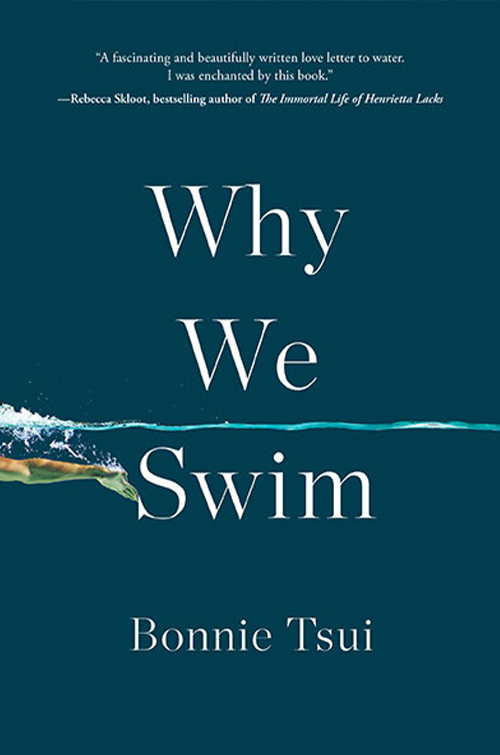
I always give myself a decompression window at the start of a swim — the first 500 yards in a pool, say, or the initial leg out to a buoy in a lake or an ocean. That’s the part of the swim that helps me to relax out of my busy brain and into a more fluid state of being. Swimming is different for me in a pool versus open water. If I’m in a pool, I have a regular workout that I like to do — in this circumscribed space where the environment is a known quantity, I can put my body on autopilot and let my mind wander. It’s very meditative.
If I’m in the Pacific Ocean, swimming is much more about being present and acutely aware of my surroundings. The variables of temperature, weather, currents, and other water conditions make it so that I can’t be totally checked out when I swim, but that also means that I’m paying attention. I’m noticing the light, the play of water on the sand, the way my fingers might catch a thread of seaweed. I feel how I’m getting nourishment from the ocean, in nature, in the world — I feel very much alive and connected to wonder.
We’re so drawn to water; just looking at it stimulates brain wave activity that’s calming and pleasurable.
In your personal experience, how has swimming shaped your own understanding of resilience and the willingness to embrace challenges?
The water is always changing; when you swim, you adapt and move with it. Swimming is an exercise in understanding that you’re not in control of everything — and that’s OK. A particular swim can be a big challenge: swimming from Alcatraz, say, and learning how to deal with the cold and the currents. But it can also be a smaller, daily challenge. If it’s chilly on any given morning, you might hesitate getting in. Once you plunge, you might move a little more briskly. Maybe your breath doesn’t come as easily. But you figure out how to get comfortable in the conditions presented to you, and in the end, you’re proud that you did. That sense of capability carries through to the rest of life.
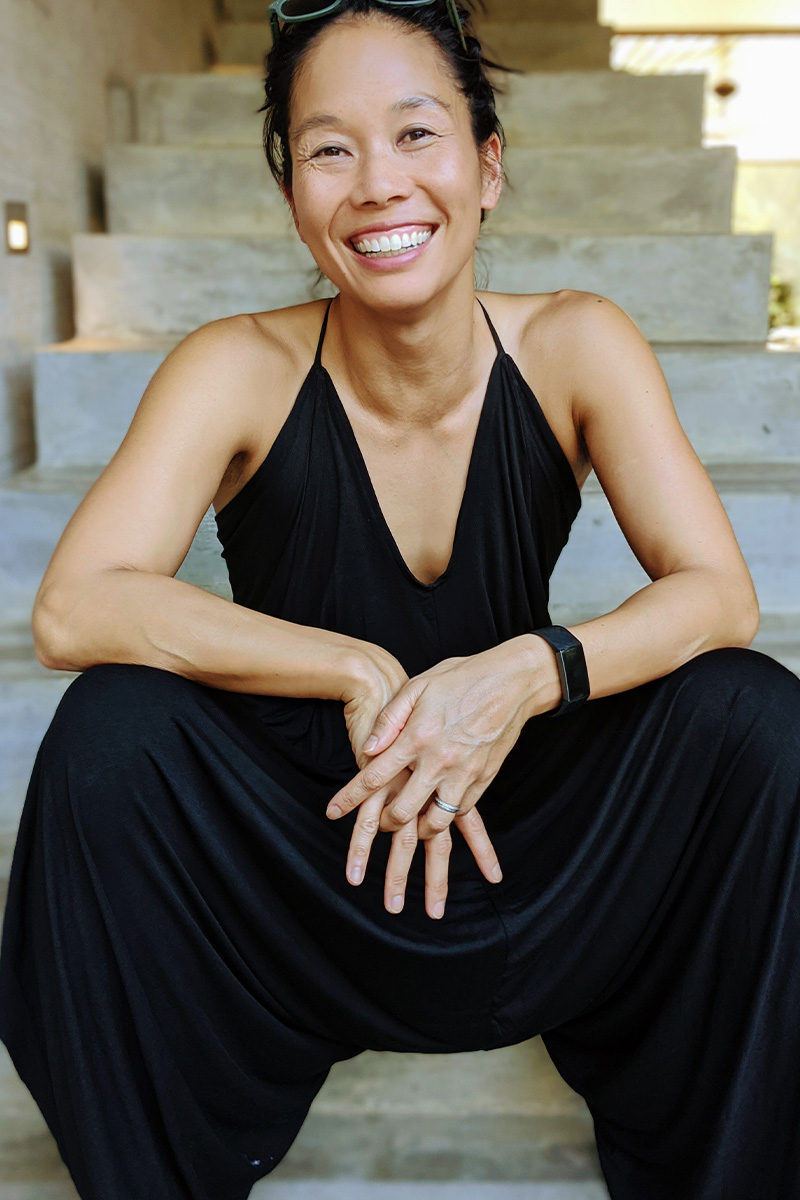
Bonnie in Costa Rica; photography by Kai Sotto.
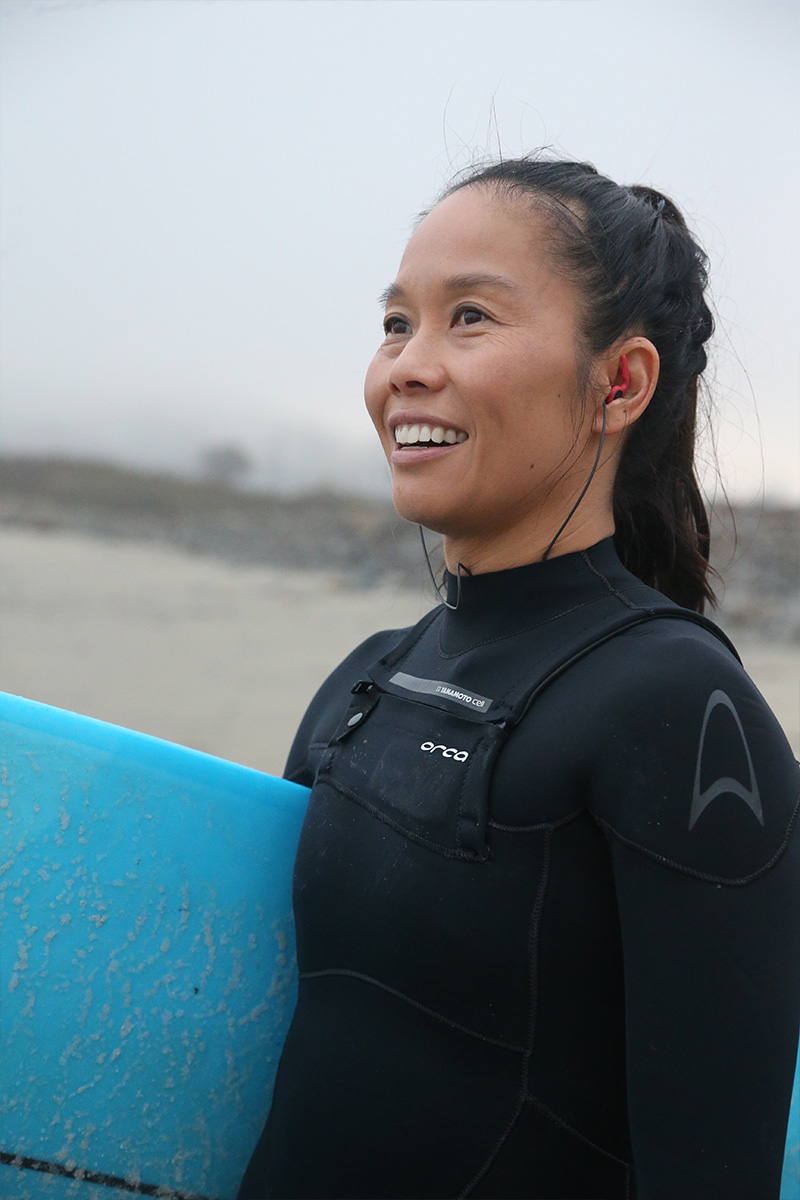
Bonnie by the Pacific Ocean during a morning surf session. Her first children’s book, Sarah and the Big Wave, is about the first woman to surf Northern California’s Mavericks; photography by Sachi Cunningham.
Have you observed any cultural or societal differences in the way swimming is approached or valued around the world? How have you seen that influence people’s relationship with the sport?
There is a beautiful richness of mythologies and stories around swimming and how people traditionally have learned to do it around the world, but these days, the main influence on whether someone does or does not swim is socioeconomic. Does your community have access to a safe body of water and swim instruction? Can your family afford the time and money to find you a pool, a teacher, transportation to that pool?
Learning how to swim is not just a one-time deal; it requires time and reliable access in order to practice. Pools are a privilege, and this is true regardless of geography. As I see it, improving global access to public pools would be the single-most-important factor — not just to influence people’s relationship with the sport but also, and more importantly, to reduce the incidence of drowning around the world.
Swimming is an exercise in understanding that you’re not in control of everything — and that’s OK.
Water can be a powerful symbol in our lives, representing both freedom and fear. How do you interpret the symbolic aspects of swimming?
One of the things I find so fascinating about our relationship to water is that we humans aren’t born knowing instinctively how to swim; unlike most terrestrial mammals, we have to be taught. And we have taught ourselves to do this over and over again in human history.
We’ve also told ourselves stories in order to pass down the culture, knowledge, and values around that skill. We’re so drawn to water; just looking at it stimulates brain wave activity that’s calming and pleasurable. We need water to survive, and yet it can kill us. That porousness between states is always (thrillingly, terrifyingly!) present. In a way, a regular practice of swimming is confronting that existential fact.
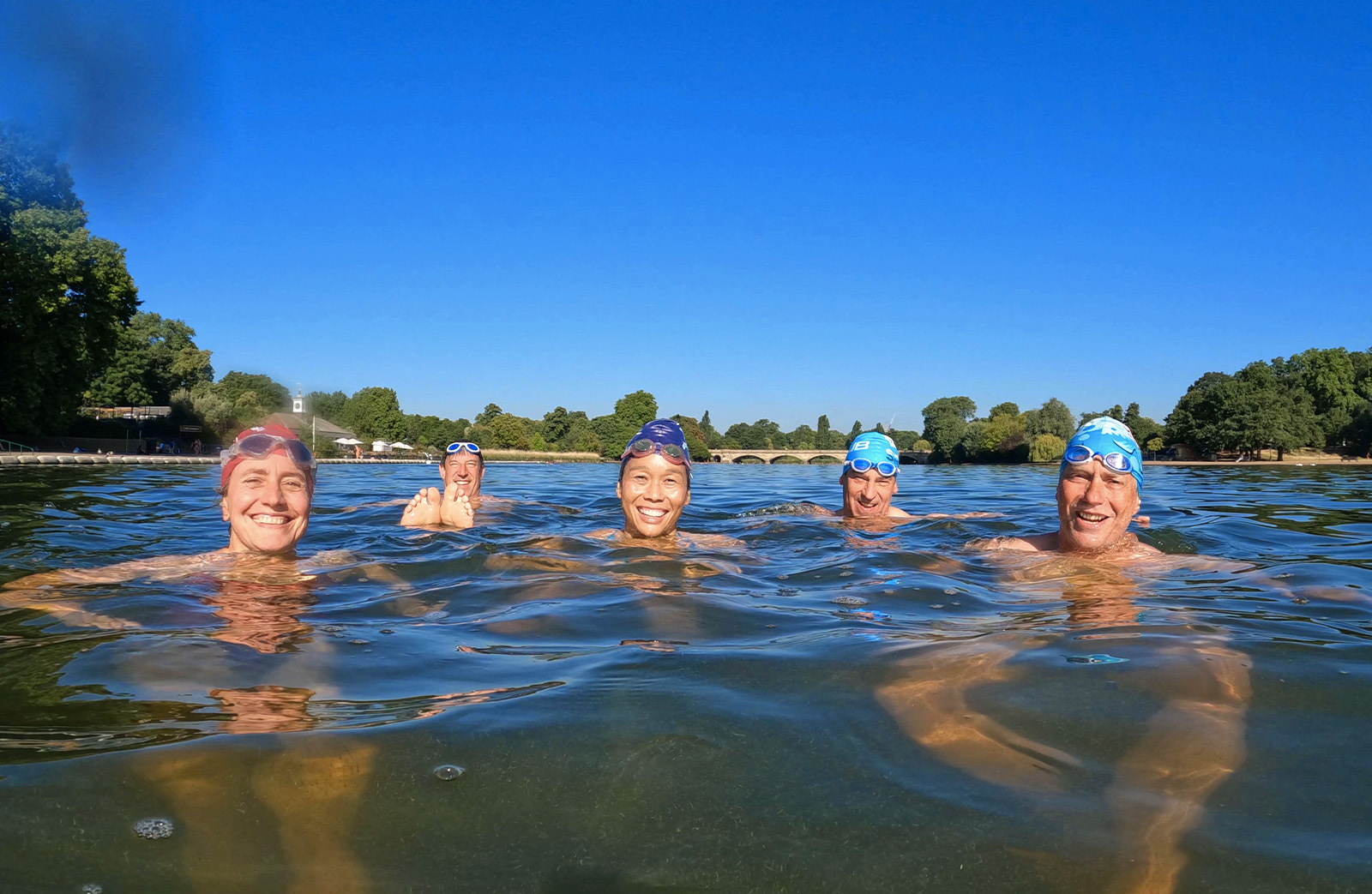
Swimming is often seen as an individual sport, yet it can also foster a sense of community. How have you experienced the social aspects of swimming in your own life?
Swimming has been such a constant for me, but it has definitely changed roles depending on the stage of life I’m in. I love that the experience itself places you in a muted, solo headspace but that there can still be community. It wasn’t until I was writing Why We Swim that I began to interrogate my own relationship with the water as well as everyone else’s! Swim team was the first environment I felt at home in my body as a young person, part of a powerful collective body of different shapes, shades, sizes. It taught me a lot about acceptance.
As I got older, I started doing triathlons, open-water swimming, and surfing, all of which brought me into the fold of other aquatic communities. So did Masters swimming. In the pandemic, when all the pools were closed, a lot of my Masters friends, even the ones who were terrified of open water, started swimming with me at Keller Beach, on the eastern edge of San Francisco Bay. In a time of profound loneliness, we got through it together. And we continue to learn from ourselves and each other. We’re so lucky to have that.
